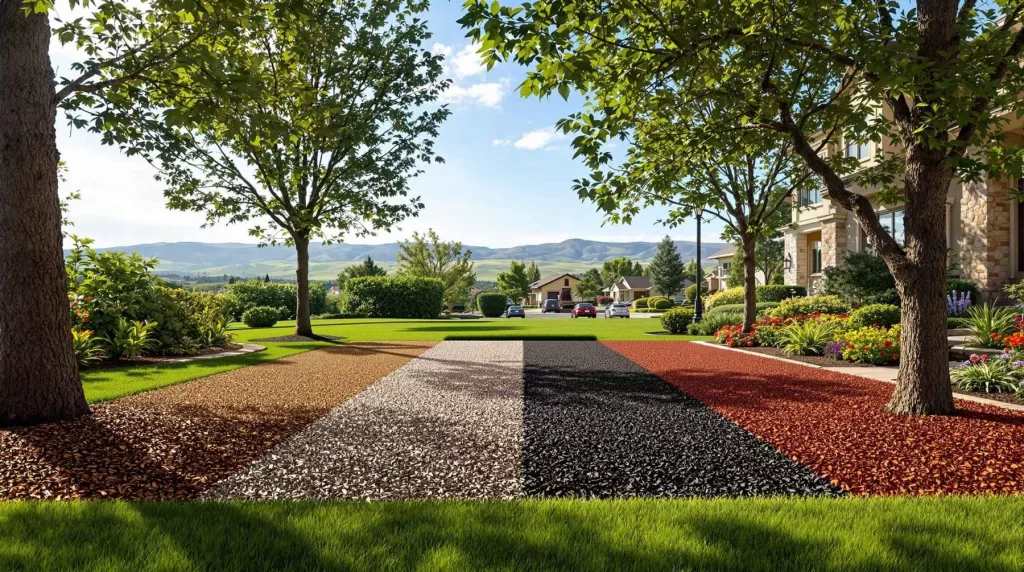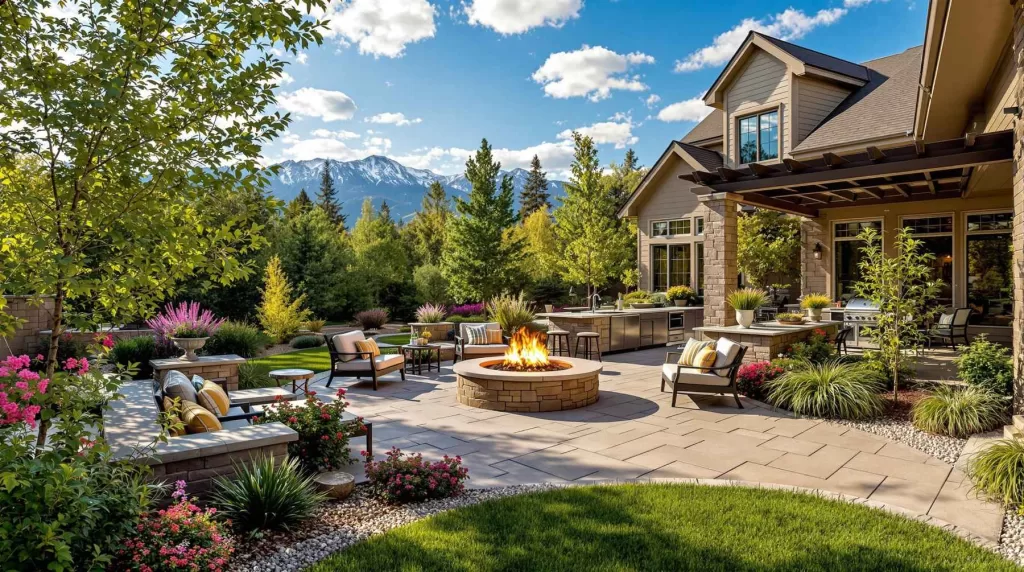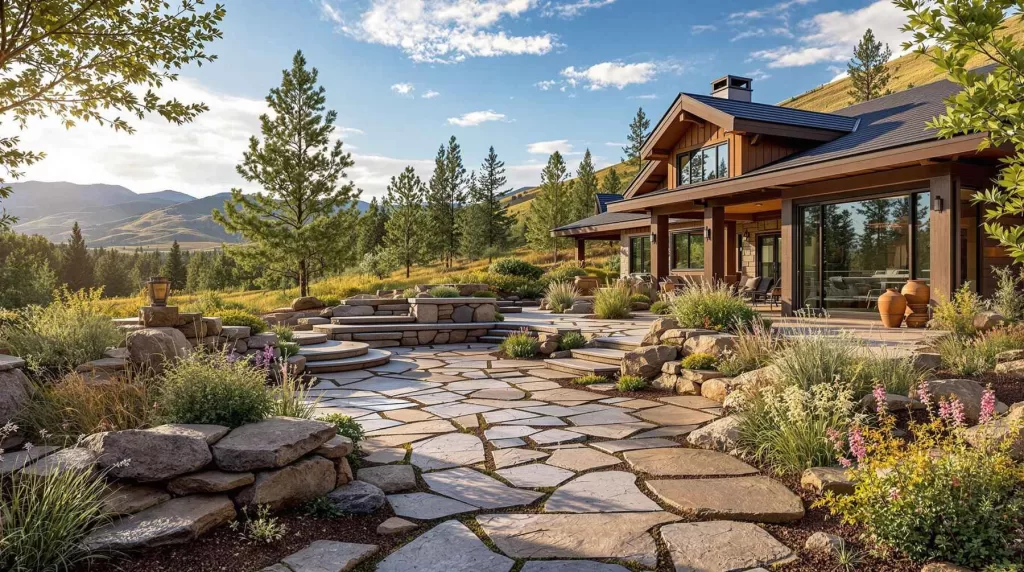Introduction
Summer in Castle Pines brings longer days, higher temperatures, and increased pressure on your lawn. If you’re hoping to keep your grass green through early summer without wasting water or overworking your yard, it all starts with understanding the local environment. From climate patterns to elevation-related soil behavior, Castle Pines lawns face unique challenges—and with the right strategy, they can thrive even in the heat.
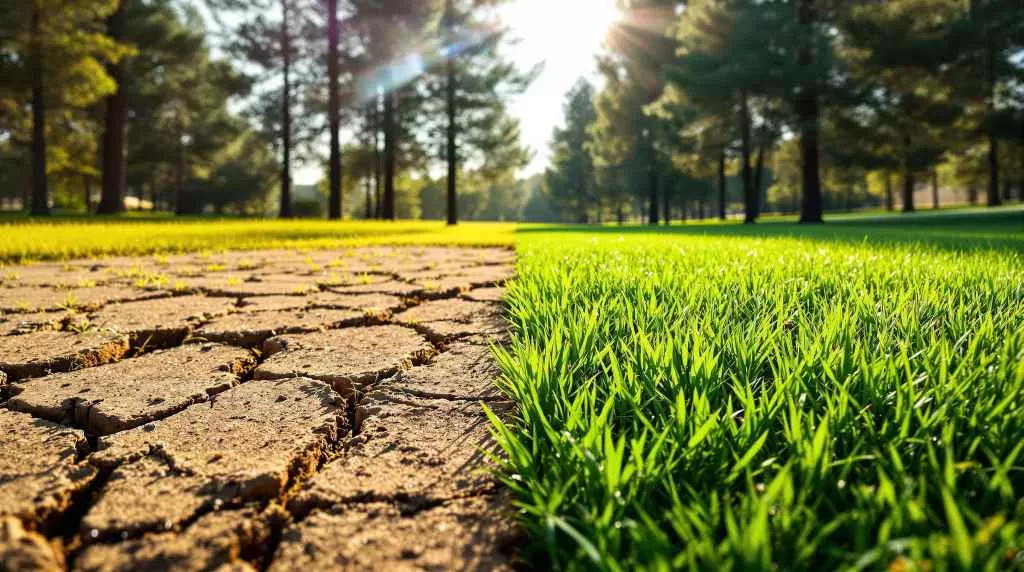
Understanding Castle Pines’ Summer Climate
Knowing how the local climate affects your lawn is step one. A skilled Castle Pines landscaping contractor can help you make the most of your turf, but it starts with understanding the elevation, soil conditions, and temperature trends that define our region.
Elevation and Soil Conditions
Castle Pines sits at over 6,500 feet in elevation, which means lower oxygen levels and faster water evaporation than lawns at lower altitudes. Combine that with compacted or clay-heavy soil common in new developments, and lawns often struggle with poor drainage and shallow root growth if not managed properly.
Temperature Trends in Early Summer
From late May through June, Castle Pines typically sees rapid temperature increases, with daytime highs climbing into the 80s and even 90s. These early-season heat waves can stress your lawn before it’s fully acclimated—especially if your spring prep wasn’t thorough.
Why Local Climate Requires a Customized Lawn Care Approach
Castle Pines isn’t like Denver or even Highlands Ranch. The microclimate, wind exposure, and UV intensity all demand adjustments to watering, mowing, and fertilization routines. What works in one Colorado town may not translate here—especially when it comes to keeping your grass green under early summer heat.
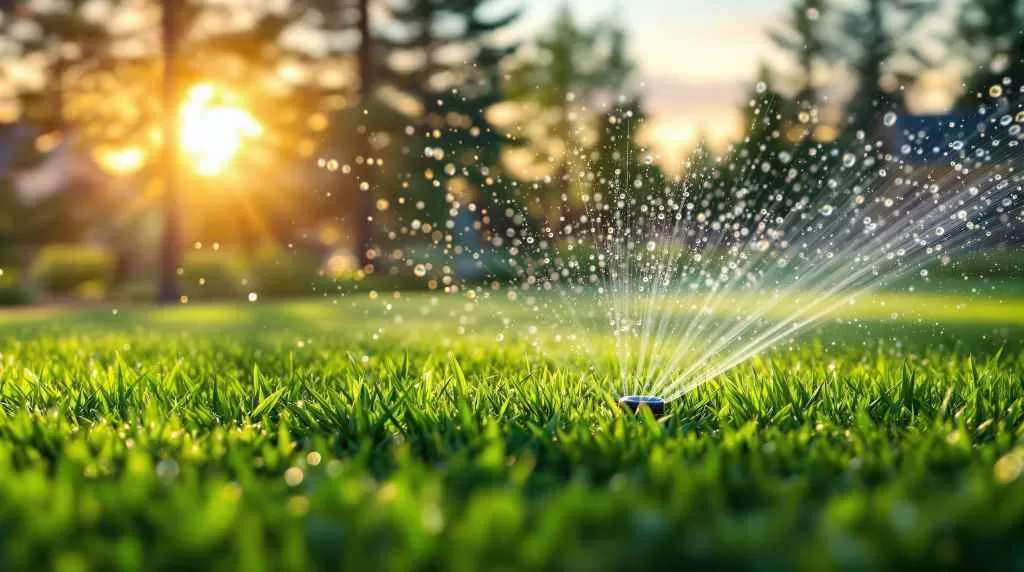
Watering Strategies for Early Summer
One of the most important aspects of early summer lawn care is water management. Homeowners investing in high-end Castle Pines landscaping services often discover that precision watering is more effective—and more efficient—than volume. Knowing when, how often, and how much to water makes all the difference in preserving lawn health through the rising heat.
Optimal Watering Times
To reduce evaporation and promote deep root growth, water your lawn early in the morning, ideally between 5 a.m. and 9 a.m. This timing allows the water to soak into the soil before the sun heats up, giving your grass a chance to absorb moisture without promoting fungal growth overnight.
How Often Should You Water?
In early summer, lawns generally need about 1 to 1.5 inches of water per week, including rainfall. Rather than watering daily, aim for deeper watering sessions two or three times a week. This encourages roots to grow deeper, which makes your grass more resilient during drought conditions.
Smart Irrigation Tips
Smart irrigation systems can make a big impact. Install weather-based controllers or rain sensors to avoid unnecessary watering. For larger properties or custom landscapes, zone-based irrigation allows you to tailor watering schedules based on sun exposure, slope, and plant type—saving water and improving coverage.
Signs of Overwatering and Underwatering
Overwatered lawns may show signs like mushrooms, excessive thatch, or yellowing grass, while under-watered lawns tend to look dry, brittle, and may turn a bluish-gray hue. If footprints linger in the grass long after walking on it, it’s often a sign of drought stress. Knowing what to watch for helps you adjust before long-term damage sets in.
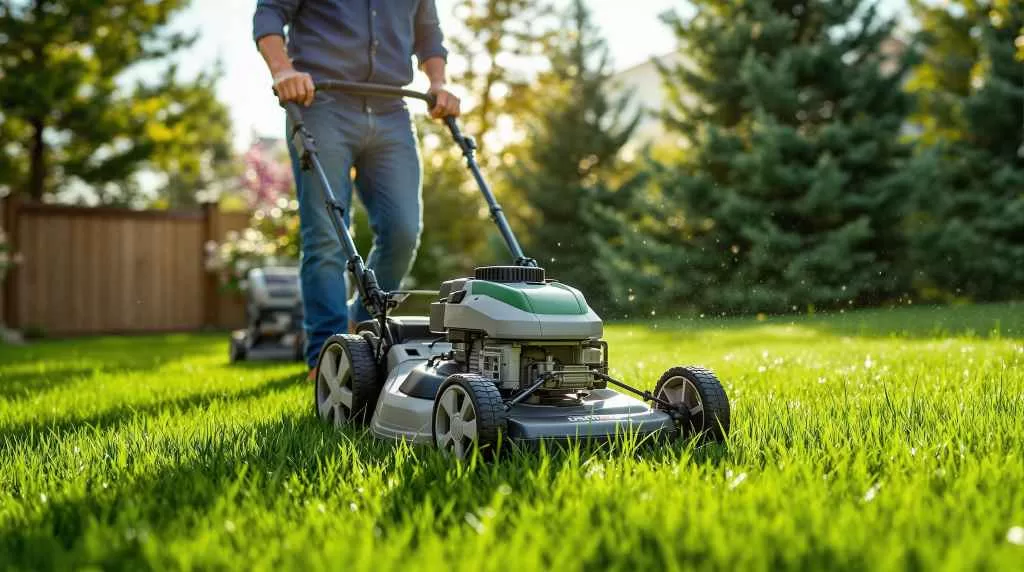
Mowing Tips for Summer Resilience
As temperatures rise, how you mow becomes just as important as how you water. Proper mowing protects your lawn from heat stress, helps retain moisture, and reduces the risk of weeds and disease. Making a few smart adjustments to your mowing habits can go a long way toward keeping your lawn green all summer long.
Ideal Grass Height in Early Summer
Raising your mower blade is one of the easiest ways to protect your lawn in the heat. In Castle Pines, cool-season grasses like Kentucky bluegrass or fescue should be kept at 2.5 to 3.5 inches tall. Longer blades provide more shade for the soil, reducing evaporation and encouraging deeper, stronger root systems.
How Often to Mow During Hot Spells
During early summer, aim to mow once every 5 to 7 days, depending on your lawn’s growth rate. Avoid removing more than one-third of the grass blade in a single cut to prevent shock. If your lawn is growing slowly due to heat or drought, it’s okay to skip a mowing session rather than stress the turf.
Blade Sharpness and Lawn Health
Mowing with dull blades can tear the grass rather than cut it cleanly, leaving ragged, brown tips that dry out quickly and make the lawn look stressed. Sharpen your mower blades at least once per season—ideally more often if you’re mowing regularly—to promote a clean, healthy cut that resists disease.
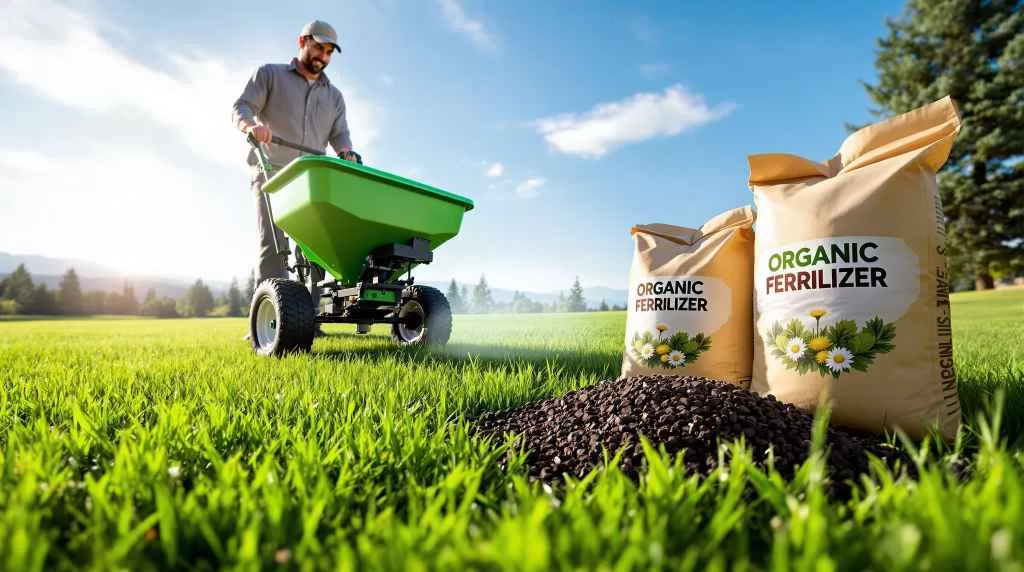
Fertilization Do’s and Don’ts
Fertilizing your lawn in early summer can either set it up for strong growth or cause serious damage if done incorrectly. Timing, product choice, and application methods are especially important during this transitional period between spring and peak heat. With the right approach, fertilization becomes a powerful tool to help your lawn stay thick, green, and resilient all season.
Best Fertilizer Types for Castle Pines Lawns
In early summer, opt for a slow-release nitrogen fertilizer that feeds your lawn gradually without overwhelming it. Products with a balanced N-P-K ratio or organic fertilizers enriched with micronutrients are ideal for our region’s soil profile, which often lacks consistency in nutrient retention due to elevation and drainage.
When to Fertilize (and When Not To)
The sweet spot for fertilizing in Castle Pines is late May to early June—after spring growth has established but before the full intensity of summer heat arrives. Avoid fertilizing during extreme heat, as it can burn the lawn or cause nutrient imbalances. If you missed the early summer window, it’s often best to wait until late summer or early fall.
Combining Fertilizer with Watering for Best Results
Always water your lawn thoroughly after applying fertilizer unless you’re using a liquid foliar feed designed for dry application. Watering helps move nutrients into the root zone while preventing runoff or chemical burns on the grass blades. For best results, fertilize just before a scheduled irrigation cycle or a predicted rain shower.
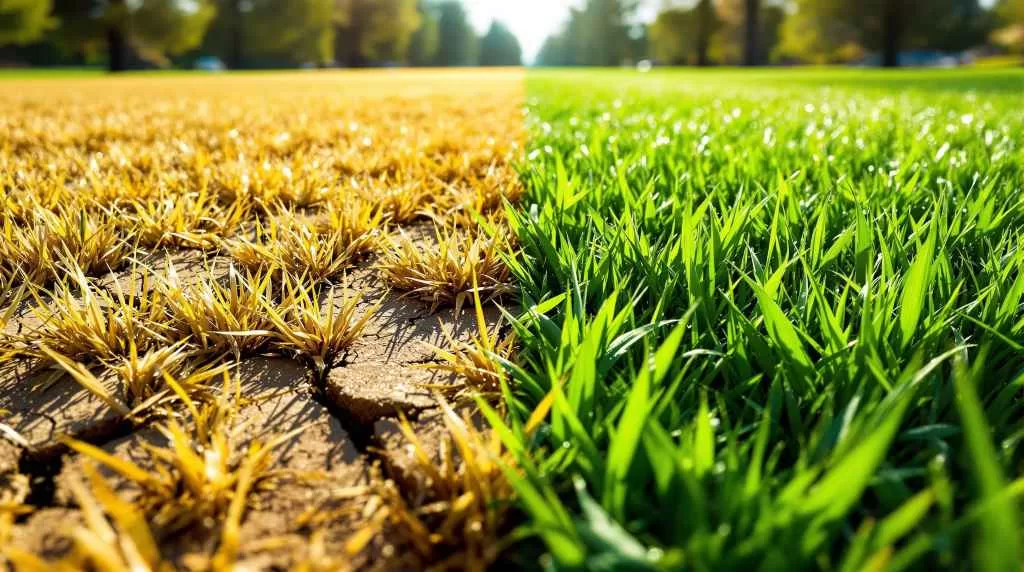
Combatting Common Lawn Stressors
Even well-maintained lawns can show signs of stress as early summer heat settles in. By identifying problems early and treating them properly, you can prevent long-term damage and maintain a lush, green lawn throughout the season. Our experienced Castle Pines landscape design team often integrates proactive solutions into both new and existing yards to help homeowners navigate these common challenges.
Heat Stress and Drought Spots
Heat stress often shows up as patchy yellow or brown areas, especially in spots with full sun or poor soil structure. These zones typically have shallow root systems and may require extra watering or aeration. Addressing heat stress early helps avoid irreversible turf damage and keeps the lawn visually consistent.
Insects and Pests in Early Summer
Pests like billbugs, sod webworms, and chinch bugs become more active as the soil warms. Early signs include brown patches that don’t respond to watering or small holes at the soil surface. Applying a targeted insecticide or introducing beneficial nematodes can reduce infestations before they spread.
Lawn Disease Prevention
Warm, humid weather combined with overwatering creates the perfect storm for fungal infections like dollar spot, brown patch, and rust. Avoid watering in the evening and be sure your lawn has proper drainage and airflow. If you notice irregular discolored patches or powdery substances, a preventative fungicide may be necessary.
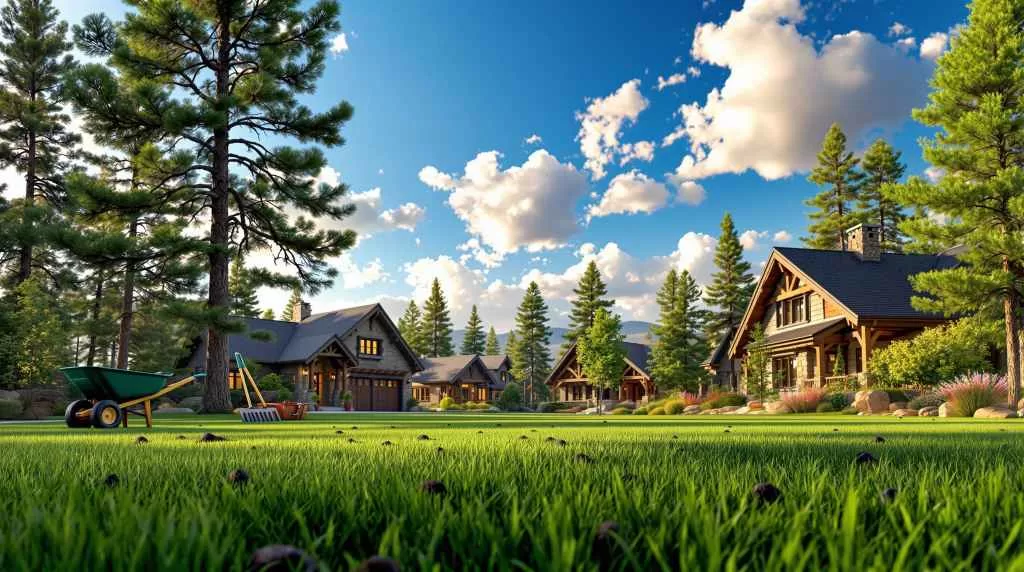
Soil Health and Aeration in Early Summer
A healthy lawn starts below the surface, and in Castle Pines, soil conditions can vary widely from lot to lot. Whether you’re dealing with compacted clay or loose fill dirt from new construction, improving soil health can dramatically enhance turf performance. If you’re looking to elevate your outdoor space in Castle Pines, understanding the role of aeration and soil conditioning is a key first step.
Is It Too Late to Aerate?
While spring and fall are ideal times for aeration, early summer is still a viable window—especially if your lawn is showing signs of compaction or shallow root growth. Aerating before peak heat allows more oxygen, water, and nutrients to reach the root zone, giving your grass a better chance to thrive through the hotter months.
Core Aeration vs. Liquid Aeration
Core aeration involves removing plugs of soil and is most effective for relieving compaction, especially in high-traffic areas. Liquid aeration, on the other hand, loosens soil at a microscopic level and can be applied more easily and frequently. Both methods improve water absorption and root development but serve slightly different purposes depending on lawn conditions.
Pairing Aeration with Overseeding
If your lawn has thin or bare patches, overseeding immediately after aeration helps new grass seed establish quickly. The holes left by core aeration create the perfect environment for seed-to-soil contact, improving germination rates. Choose grass varieties that match your existing lawn and are suited to Castle Pines’ elevation and temperature swings.
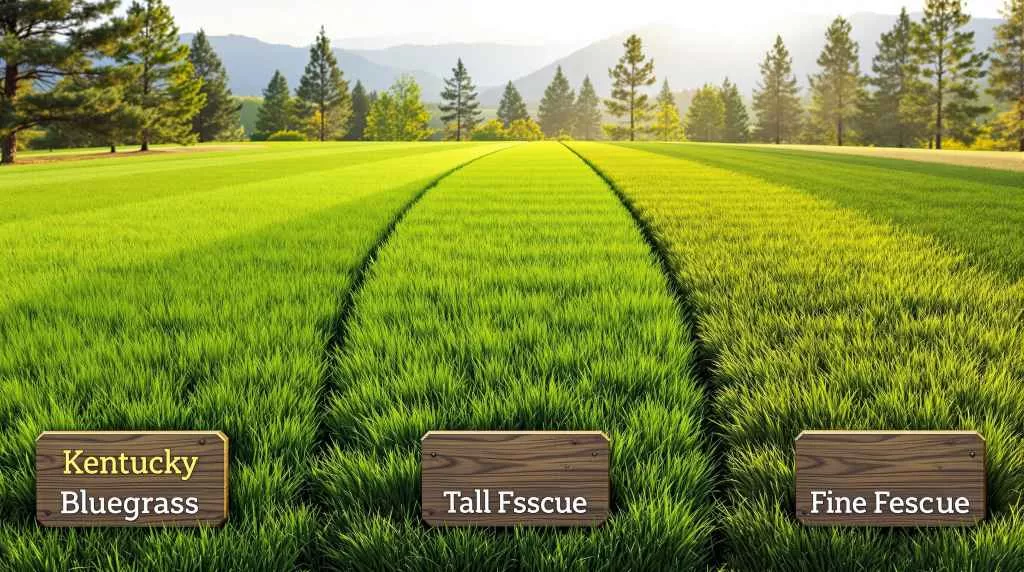
Grass Types Best Suited for Castle Pines
Choosing the right type of grass can make all the difference when it comes to surviving early summer heat at elevation. The right blend will resist drought, stay green longer, and bounce back faster after stress. If you’re considering a full lawn renovation or new install, exploring options through professional outdoor design in Castle Pines ensures your turf is selected with long-term performance in mind.
Cool-Season vs. Warm-Season Grasses
Castle Pines is best suited for cool-season grasses like Kentucky bluegrass, tall fescue, and fine fescue, which thrive in spring and fall and can be maintained through summer with proper care. Warm-season varieties like Bermuda or zoysia aren’t ideal due to our short growing season and colder winters, though they may be viable in select microclimates.
Top Recommended Varieties for Local Yards
The most resilient grasses for Castle Pines include Kentucky bluegrass for color and recovery, tall fescue for drought resistance, and fine fescue for shaded or low-maintenance areas. These varieties handle the region’s temperature swings, elevation, and soil conditions far better than generic seed mixes from big-box stores.
Blended Lawns for the Best of Both Worlds
Many local landscapes benefit from using a blend of multiple grass types to balance durability, shade tolerance, and appearance. Blended lawns recover better from stress, adapt to diverse sun conditions, and fill in damaged areas more naturally over time—making them ideal for families, pets, and entertaining.
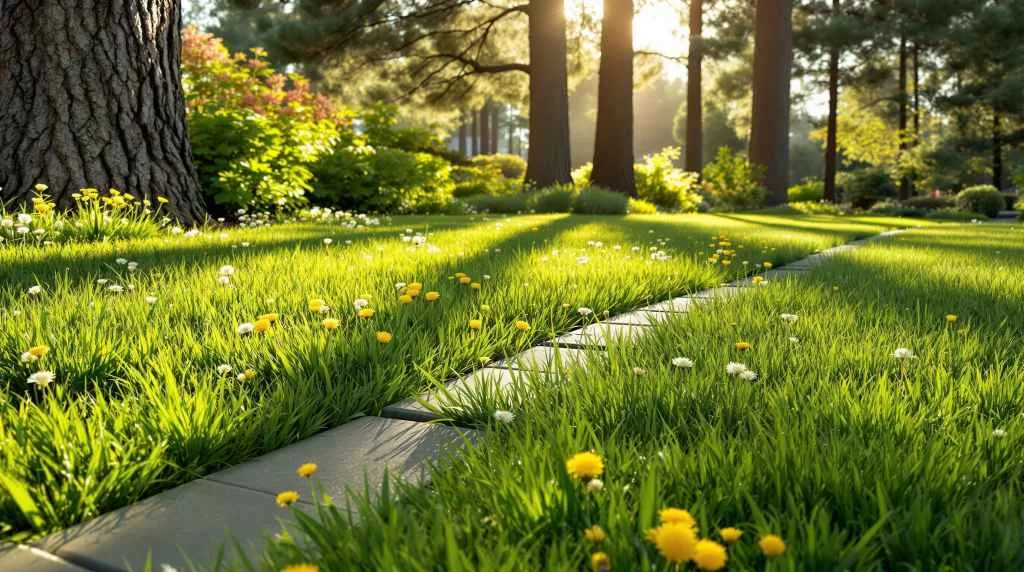
Weed Control During Peak Growth
As your grass enters early summer stress, weeds take full advantage of any bare or thinning patches. The best defense is a dense, healthy lawn, but even well-maintained yards need a little help during this aggressive growth period. Staying proactive with weed control now can save you from a full takeover later in the season.
Pre-Emergent vs. Post-Emergent Options
Pre-emergent herbicides are most effective when applied in early spring, but if you missed that window, post-emergent products can help target weeds already growing. Choose selective herbicides based on your grass type and weed variety to avoid damaging your lawn while keeping crabgrass, dandelions, and clover in check.
Natural Weed Control Methods
If you’re avoiding chemicals, there are still plenty of options. Hand-pulling with a weed tool, applying vinegar-based sprays, or using corn gluten meal as a natural pre-emergent can all contribute to a healthier lawn without synthetic treatments. Mulching around planting beds also suppresses weeds and improves soil health.
How Lawn Density Impacts Weed Suppression
One of the most effective ways to prevent weeds is to maintain a thick, dense lawn. When grass roots are strong and blades cover the soil surface, weeds struggle to find sunlight or space to grow. Fertilizing properly, mowing at the right height, and overseeding as needed all contribute to long-term weed resistance.
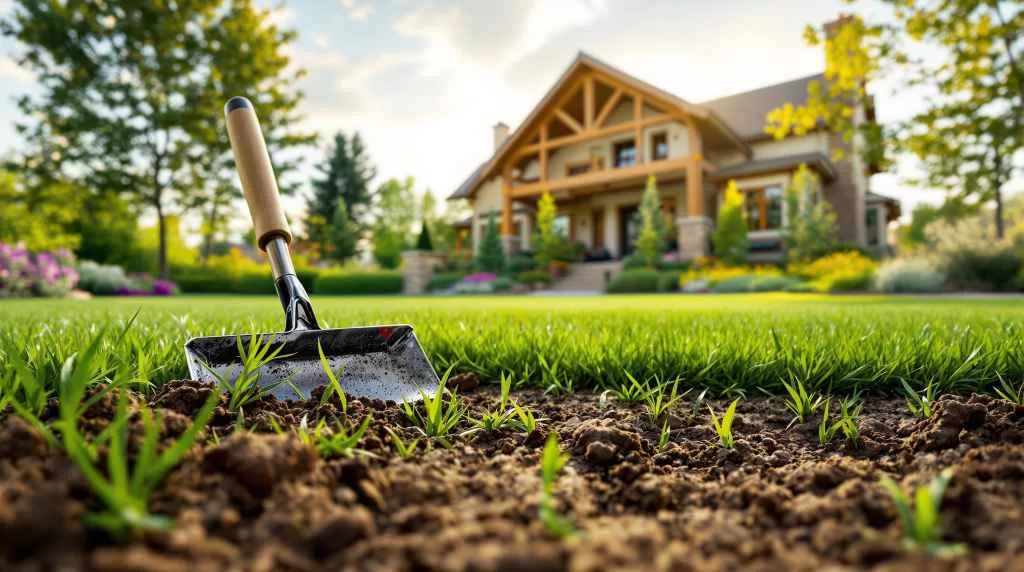
Lawn Renovation for Stressed or Patchy Areas
Even with proper maintenance, some lawns still suffer damage due to poor soil, heavy foot traffic, or inconsistent watering. Early summer is a great time to assess trouble spots and take action before the heat peaks. A focused renovation can bring your turf back to life and set it up for long-term success.
Spot Repair Techniques
For small bare areas or thinning patches, rake out debris, loosen the soil, and apply a high-quality seed mix that matches your existing lawn. Top-dress with a thin layer of compost and keep the area consistently moist until germination. Patch repair is often quick and cost-effective when done early.
When to Reseed or Resod Entire Areas
If more than 40% of the lawn is bare or heavily compacted, it may be more efficient to reseed or install sod. Seeding offers more grass variety and affordability, while sod provides instant coverage and erosion control. Choose the method that fits your timeline, budget, and tolerance for grow-in time.
Hiring a Professional for Lawn Recovery
When underlying issues like poor grading, hardpan soil, or drainage problems are involved, it’s smart to bring in a landscape expert. A professional can evaluate root depth, soil composition, and irrigation performance to develop a custom recovery plan that addresses the real cause—not just the symptoms.
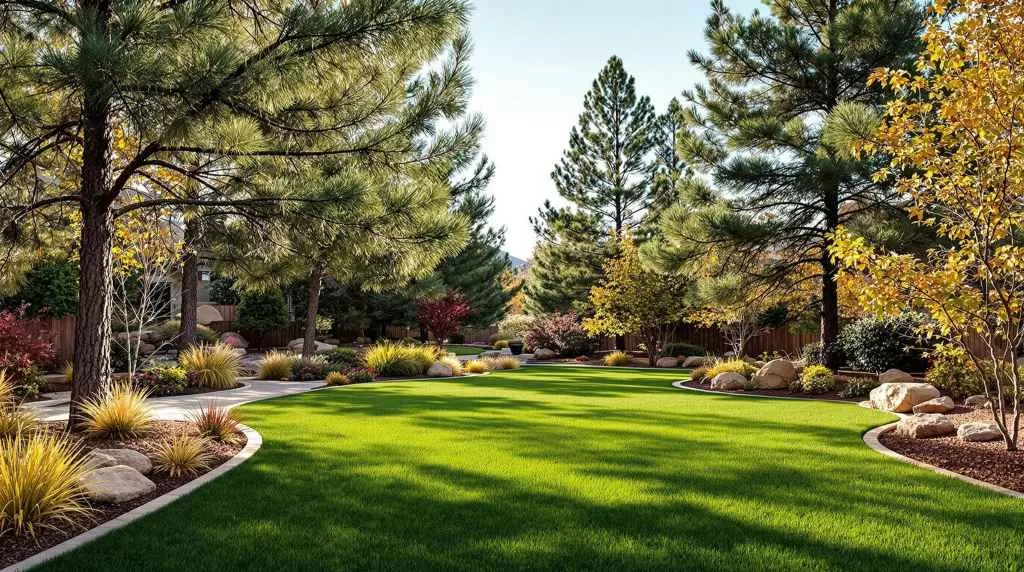
How Landscape Design Affects Summer Lawn Health
Smart landscaping does more than improve curb appeal—it can directly influence how well your lawn performs during the summer heat. Thoughtful design choices support water conservation, reduce stress on turf, and create natural buffers to protect your lawn from the elements. Many homeowners explore outdoor enhancements for Castle Pines homes not just for beauty, but to boost long-term lawn health and sustainability.
Tree Placement for Shade and Moisture Retention
Strategically placed trees provide partial shade during peak sunlight hours, helping reduce evaporation and cooling the surrounding grass. Even small ornamental trees can create microclimates that protect nearby turf, especially in south-facing or full-sun areas prone to drying out quickly.
Hardscape Design to Reduce Lawn Stress
Incorporating patios, mulch beds, paver walkways, or gravel zones helps minimize the size of your lawn while enhancing overall design. These hardscape features reduce mowing, lower water usage, and direct foot traffic away from vulnerable turf areas—making your lawn easier to maintain and more resilient.
Drainage Considerations and Lawn Longevity
Improper drainage can lead to soggy zones or dry spots, both of which put stress on your lawn. During early summer, water needs to move efficiently through the soil without pooling. Grading, French drains, and dry creek beds are all effective ways to manage water flow and protect your lawn from overwatering or erosion.
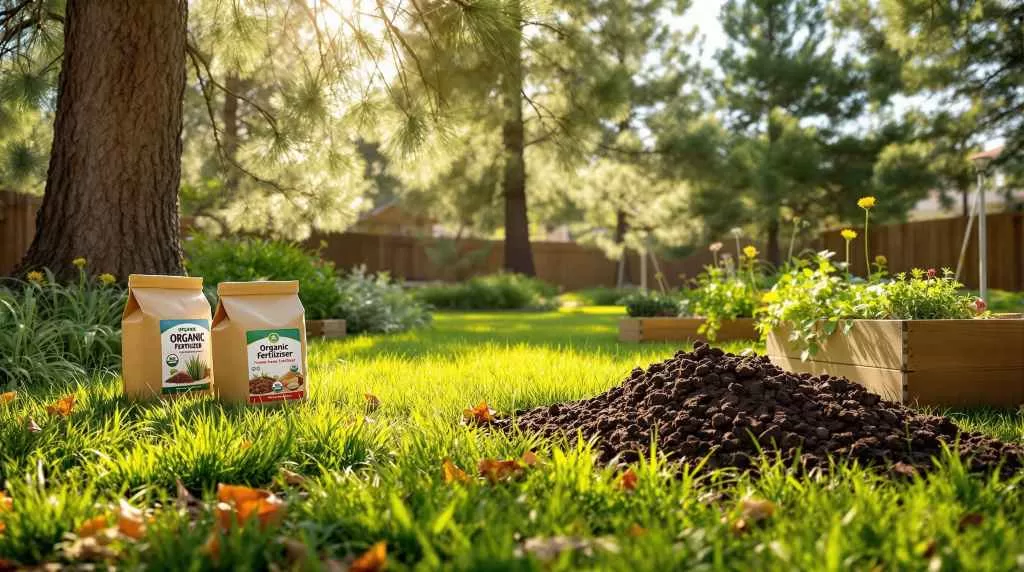
Organic Options for Eco-Friendly Lawn Care
If you’re looking to reduce your environmental impact while keeping your lawn green and healthy, there are plenty of organic strategies that work well in Castle Pines. These methods improve soil health, reduce chemical runoff, and support a more balanced ecosystem—making your yard both beautiful and sustainable.
Organic Fertilizers and Compost
Organic fertilizers like fish emulsion, bone meal, and composted manure provide slow-release nutrients without the harsh effects of synthetic products. Adding compost to your lawn a few times a year improves soil structure, water retention, and microbial activity, which all contribute to long-term lawn resilience.
Natural Pest Repellents
Instead of broad-spectrum pesticides, consider using natural pest control options like neem oil, diatomaceous earth, or beneficial nematodes. These solutions are safe for pets and children and can target specific pests without harming pollinators or beneficial insects living in your lawn.
Water Conservation with Organic Practices
Organic lawn care focuses on building soil that naturally holds more water. Techniques like mulching grass clippings, increasing organic matter, and choosing drought-tolerant grass types can dramatically reduce the need for irrigation. Over time, these practices make your lawn healthier and more self-sustaining.
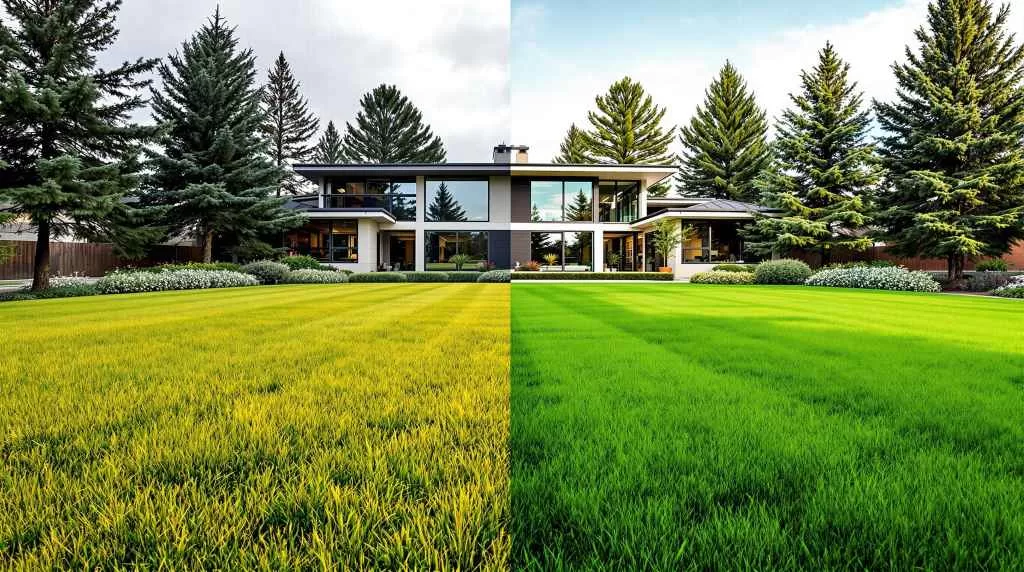
Common Mistakes Castle Pines Homeowners Make
Even the most well-meaning homeowners can unintentionally harm their lawns during the early summer transition. Avoiding these common mistakes will help your grass stay green, healthy, and stress-free as temperatures rise.
Overwatering and Runoff Waste
Too much water can drown your lawn’s roots, cause fungal diseases, and lead to nutrient runoff. In Castle Pines’ elevation and soil conditions, deep but infrequent watering is more effective than daily light watering. Letting the top inch of soil dry out between sessions helps promote deeper root growth.
Mowing Too Short in Summer
Cutting your grass too low—also known as scalping—can expose the soil to direct sunlight, increasing evaporation and weed intrusion. Set your mower blades higher in summer to retain moisture and shade the soil, which keeps your turf cooler and more resilient.
Using the Wrong Products for Our Region
Lawn care products designed for lowland or humid climates may not perform well in Castle Pines. Avoid generic seed blends and fertilizers that don’t account for our high elevation, dry air, and short growing season. Always select products formulated for Colorado’s specific turf and climate conditions.
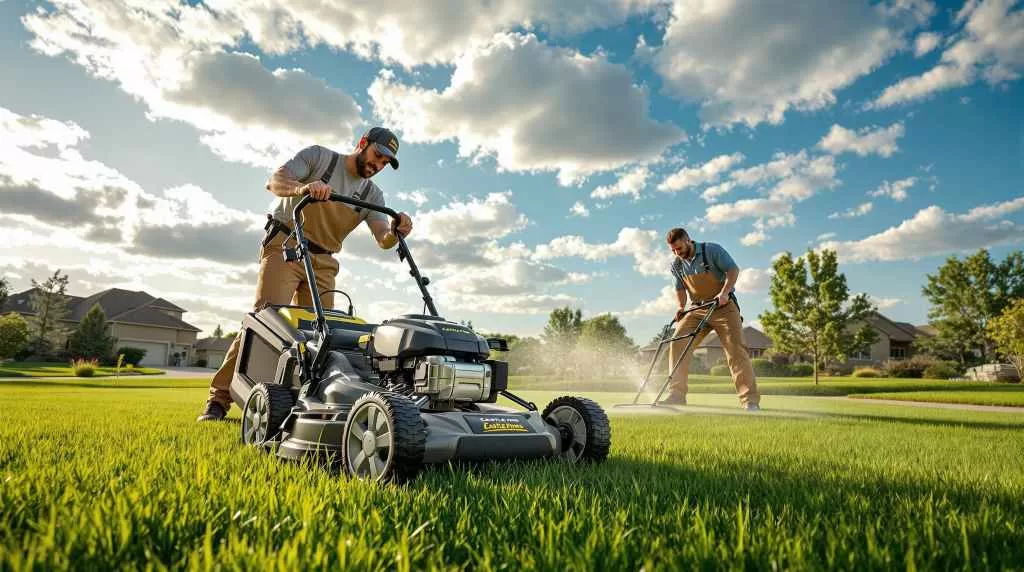
DIY vs. Professional Lawn Care
Whether you’re a hands-on homeowner or prefer to outsource yard work, it’s important to know which tasks are manageable on your own and when it’s worth calling in the pros. Balancing DIY lawn care with expert support can help you maintain a beautiful lawn without unnecessary stress or guesswork.
Benefits of Hiring a Local Lawn Expert
A professional lawn care team understands the specific challenges of Castle Pines lawns, from elevation-based watering needs to soil testing and treatment. Local experts can customize your care plan, recommend ideal products, and spot hidden issues before they become expensive repairs—all while saving you time and effort.
What You Can Do Yourself
Tasks like mowing, hand-watering, applying organic treatments, and basic weed removal are well within reach for most homeowners. Staying consistent with these basics can significantly improve your lawn’s health between professional service visits and reduce long-term maintenance costs.
When to Bring in Reinforcements
If you’re dealing with irrigation issues, widespread turf damage, lawn diseases, or drainage problems, it’s best to bring in a professional. Expert help ensures these complex issues are diagnosed and resolved correctly, avoiding wasted money on trial-and-error fixes and ensuring your lawn performs well through summer.
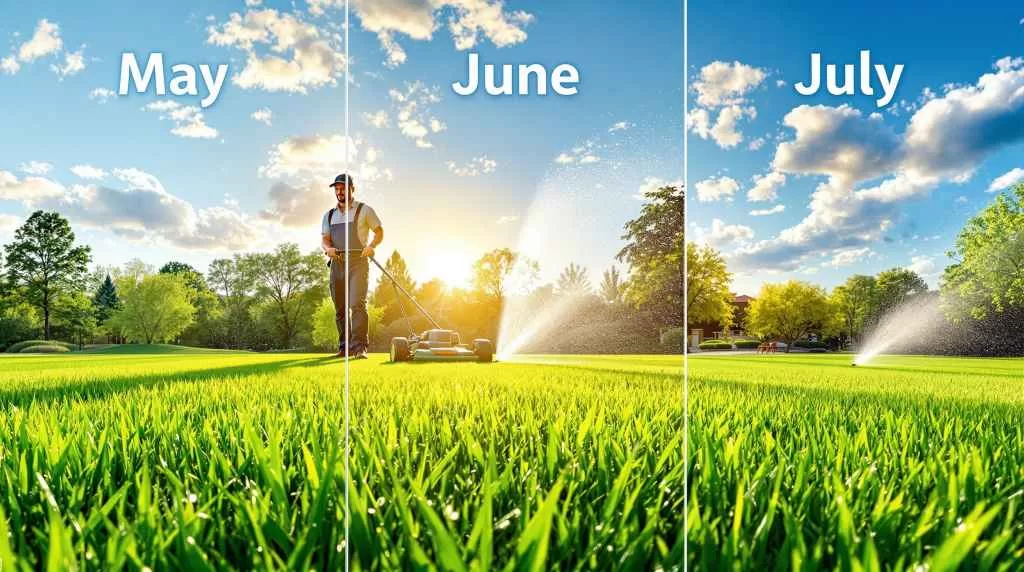
Monthly Lawn Care Calendar (May–July)
Timing is everything when it comes to lawn care in Castle Pines. Knowing what to focus on each month helps you stay ahead of heat stress, weeds, and other summer challenges. This seasonal calendar provides a quick breakdown of priorities from late spring through mid-summer.
May: Spring to Summer Transition
In May, focus on activating your irrigation system, applying a balanced slow-release fertilizer, and performing a final round of pre-emergent weed control if needed. It’s also a good time to aerate compacted areas and begin adjusting mowing height in preparation for warmer weather.
June: The Heat Sets In
June is when the lawn starts to feel the pressure of rising temperatures. Monitor for early signs of drought stress, increase mowing height, and switch to deep, infrequent watering. Keep an eye out for insects and patchy growth, and apply post-emergent weed control where necessary.
July: Managing Peak Temperatures
July brings the most intense heat and UV exposure. Your focus should be on maintaining moisture, preventing stress, and avoiding over-fertilization. If any areas look beyond recovery, consider planning renovations for late summer or early fall. Stick to early morning irrigation and avoid mowing during hot afternoons.
Ready to Transform Your Outdoor Space?
If you’re ready to take your lawn from struggling to thriving this summer, our team is here to help. At Custom Landscapes by Design, we specialize in Castle Pines lawn care and serve surrounding areas like Castle Rock, Parker, and Highlands Ranch with custom solutions tailored to our region’s unique climate. Whether you need expert irrigation tuning, lawn renovation, or full-service outdoor design, we bring the experience and local knowledge to get it done right. Let’s make your yard the best-looking one on the block—starting today.

